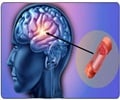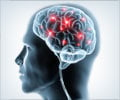Antithrombotics agents used as therapy among low risk stroke patients increase risk of death and bleeding.
- Blood thinners are a popular form of therapy for people considered to be at risk for strokes; however, a new study finds that they could do more harm than good for the patient
- The use of this therapy on low risk stroke patients shows that they could be at an increased risk of death and bleeding
- Low risk patients who did not receive anticoagulant therapy had a lower risk of death and bleeding
Antithrombotic Therapy
Antithrombotic therapy involves the use of drugs that lower the occurrence of blood clots. These are usually administered either for prevention or to treat potentially life threatening blood clots.CHA2DS2
The current study overwrites some of the popularly held beliefs about the use of antithrombotic therapy. The European Cardiology Society states that the CHA2DS2 VASc score for patients on antithrombotic therapy and with stroke risk factors are- A score of 1 or more for men
- A score of 2 or more for women
- CHADS2 score of 0 to 1 and
- CHA2DS2 VASc of 0 to 2
CHADS2 is an acronym in which
- "C" stands for congestive heart failure
- "H" stands for high blood pressure
- "A" stands for age which is 75 or above
- "D" stands for diabetes
- "S" stands for stroke
- "2" stands for previous history of stroke
- "A2" that stands for >75 or above
- “V” that stands for vascular disease
- “A” that stands for 65-74 years
- “Sc” that stands for the sex category
Dr. Victoria Jacobs from the Intermountain Medical Center Heart Institute researcher said that the use of antiplatelet or anticoagulation therapies was controversial even among the medical community. According to the doctor, there is no common consensus about the use of these therapies but there are important insights that were gained form the current study.
56,723 patients who suffered from atrial fibrillation were included in the study and they had a CHADS2 score of 0-1 and a CHADS2 VASc scores of 0-2. There were different groups of patients based on the use of aspirin, warfarin and clopidogrel.
5 Year Follow up
After 5 years, the findings of the study showed thatGroup 1: patients on Aspirin vs patients not on Aspirin
- 4.6% of patients who were on Aspirin suffered a stroke
- 2.3 % of patients who did not have Aspirin suffered a stroke
- 17.6 % of patients on Aspirin had significant bleeding
- 11.5 % of patients who did not have Aspirin had bleeding
- 5.7 % of patients on Warfarin suffered a stroke after a period of five years
- 2.6 % of patients not on Warfarin suffered a stroke after a period of five years
- 22.3 % of patients on Warfarin had significant bleeding
- 12.3 % of patients not on Warfarin had significant bleeding
Stroke
A stroke requires immediate medical attention since it reduces blood flow to a particular part of the brain. The brain cells in that region begin to die within minutes of losing oxygen supply and lose their functionalityThere are two types of stroke:
- Ischemic stroke- This type of stroke results from a blood clot which plugs or blocks a a blood vessel to the brain.
- Hemorrhagic stroke- In hemorrhagic stroke, blood vessel breaks and bleeds into the brain.
Symptoms of Stroke
The symptoms of stroke are as follows:
- Sudden weakness or loss of sensation on a part or whole of the face, leg or arm
- Sudden difficulty in speaking or understanding
- Sudden difficulty of sight in one or both the eyes
- Sudden difficulty in walking, loss of balance, dizziness or poor coordination
- Sudden development of intense headache
References:
- Stroke - (https://medlineplus.gov/stroke.html)
















